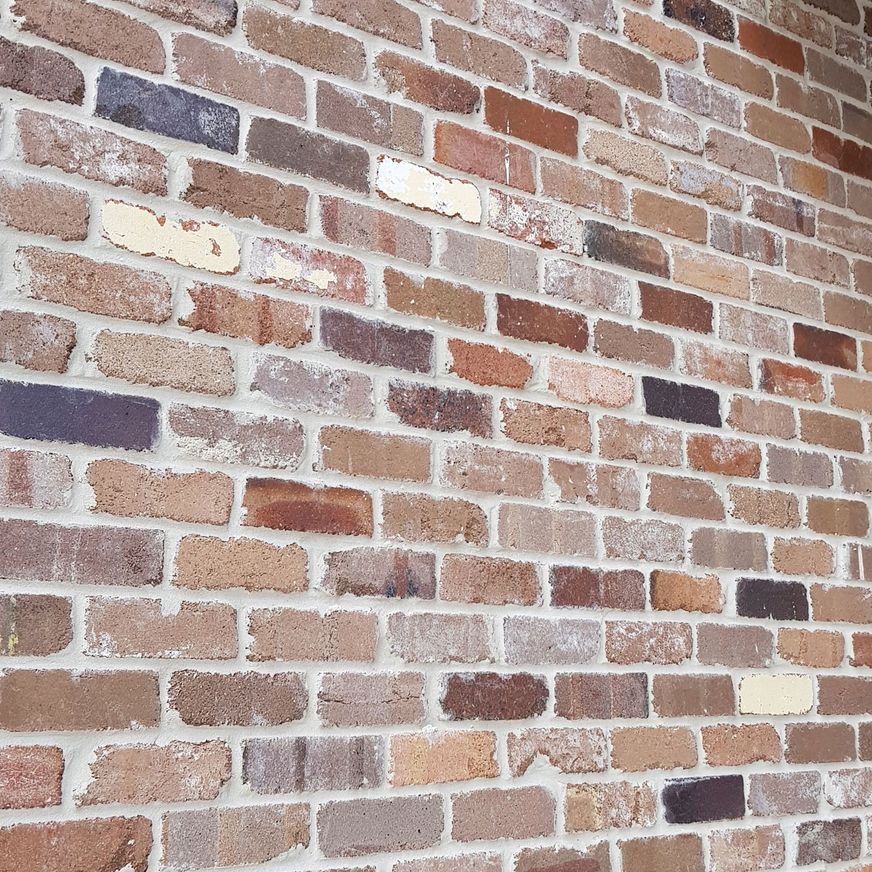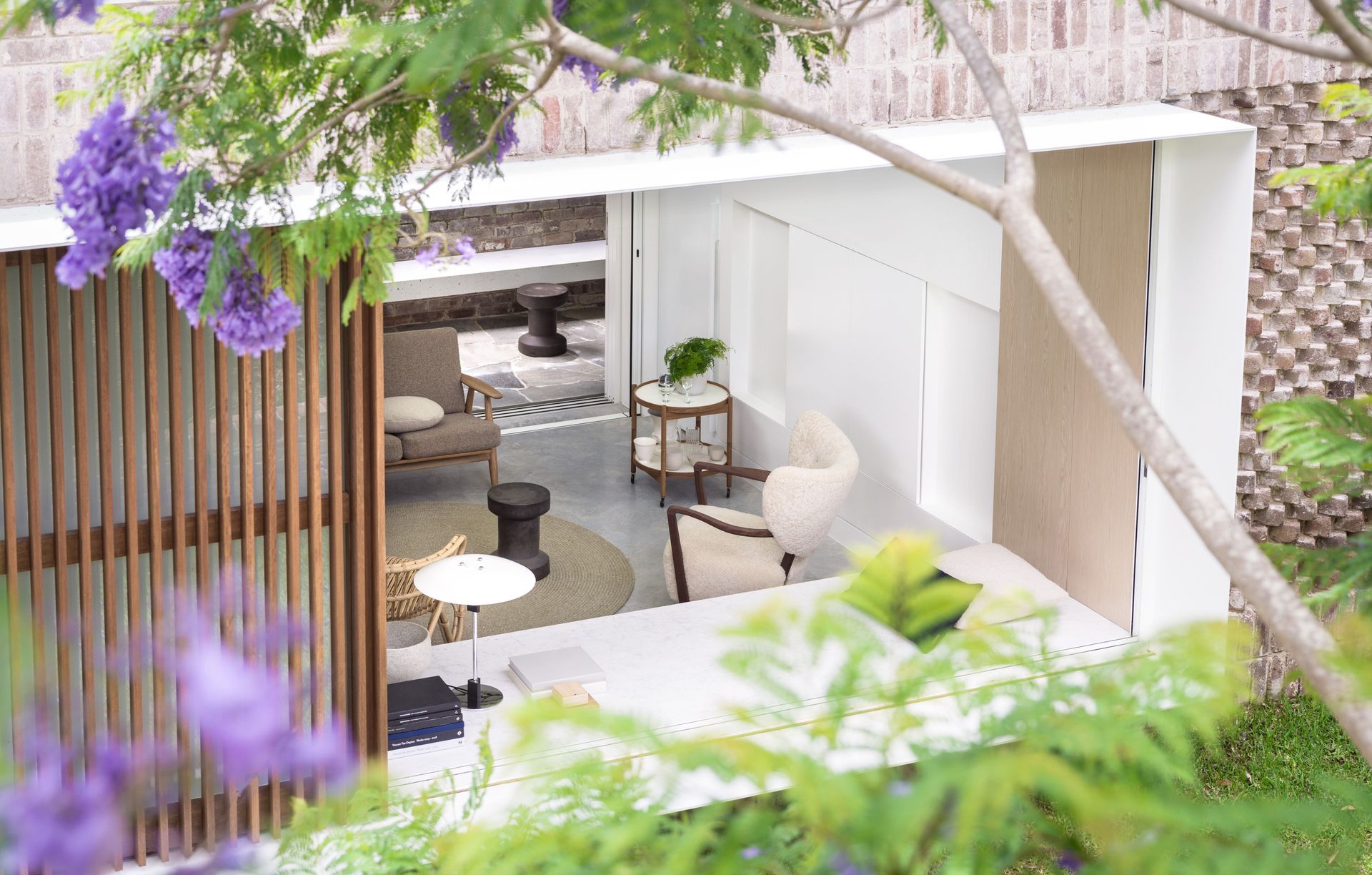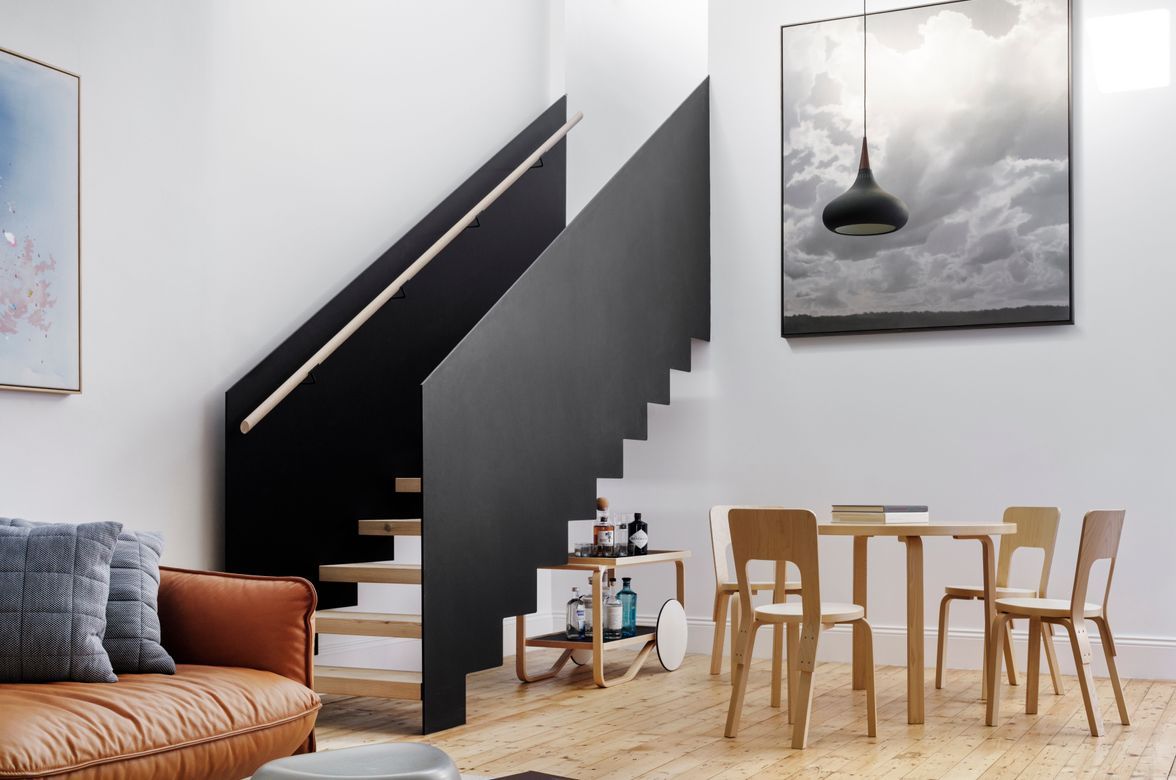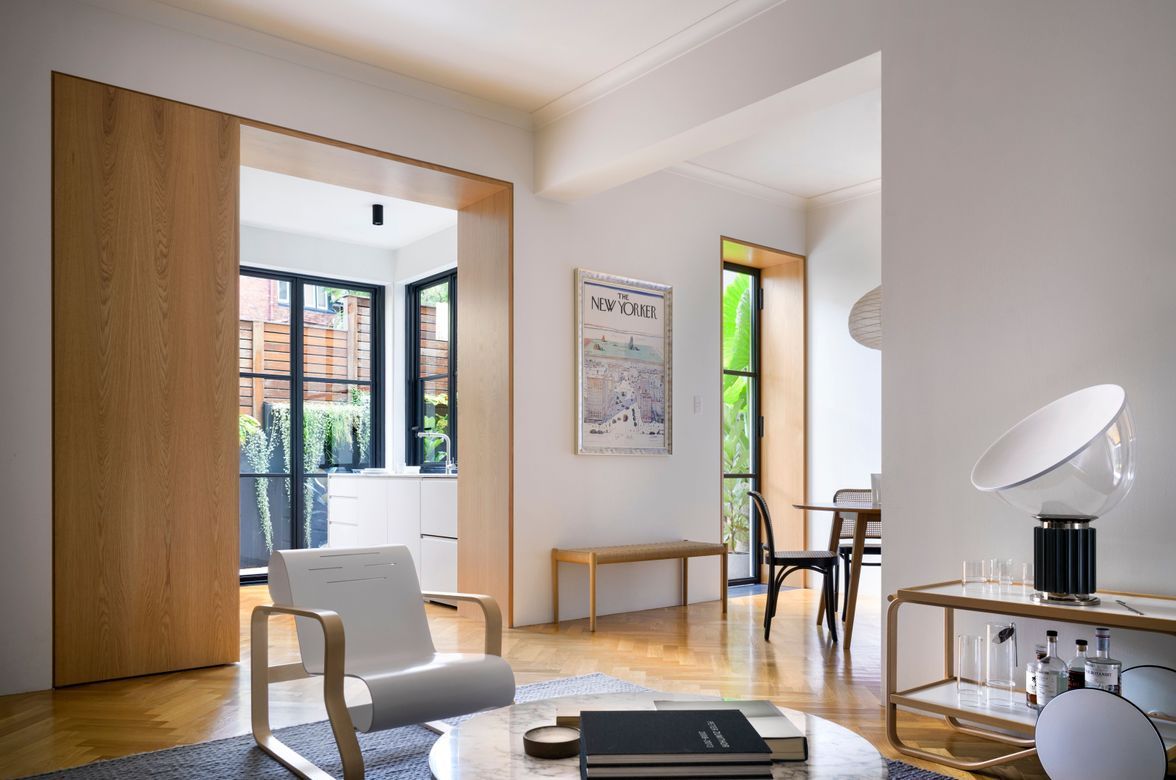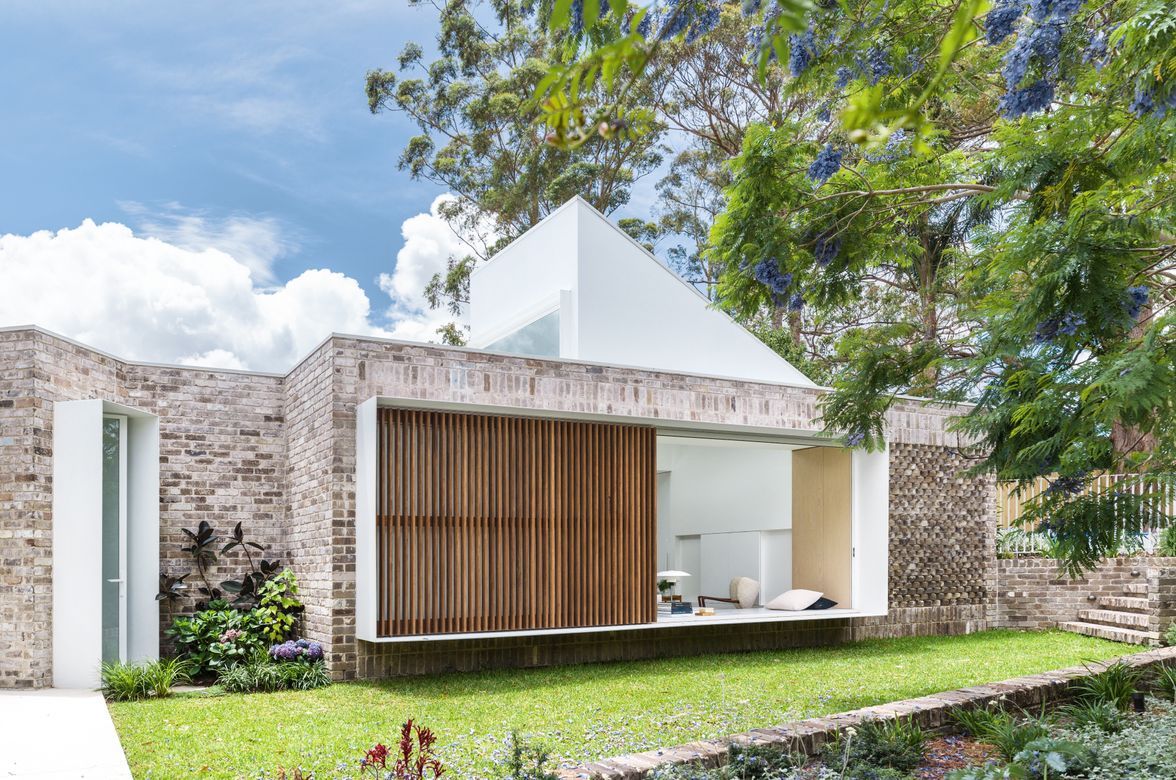The Rose House
The Rose House consists of alterations to a two storey house. A solid masonry façade responds to and protects the house from the site’s street frontage, a charmless and inhospitable cul-de-sac consisting of 1970s apartment building car parking podiums and the Bradfield Highway beyond. The cul-de-sac and nearby highway, a source of constant noise, needed to be addressed in the reconfiguration. A heavy masonry front façade with various sized apertures acting much like the battlements of a medieval castle was designed to protect the house from this environment and offer respite and tranquillity within. While a strong barrier was required, recycled bricks, some from the existing house, were used to provide warmth and texture to this façade.
Black steelwork, synonymous with strength, is used as sheltering elements and frames openings within the brickwork.
As one passes through the house, the solidity of the façade lightens and dissipates until there is almost nothing left between the interior and exterior spaces. The living room and master bedroom end in a wall of glass to the east and harbour views beyond.
Photo Credit: Justin Alexander












Products used in The Rose House
Professionals used in The Rose House
More projects by Brcar Morony Architecture
About the
Professional
Welcome to Brcar Morony Architecture, where design meets dedication and innovation. Founded in 2015 by Natalie Brcar and Michael Morony, our architectural practice brings together a wealth of experience and a shared passion for creating exceptional spaces. With a foundation built on collaboration and a deep understanding of our clients' needs, we pride ourselves on delivering design solutions that exceed expectations.
Specialising in new builds, residential projects, renovations, interior designs, alterations, and additions, we offer a comprehensive range of services to bring your vision to life. Our portfolio speaks for itself, with award-winning projects such as "A House for Grandma" and "The Rose House" receiving recognition from prestigious institutions like the Australian Institute of Architects and Grand Design Australia. When you choose Brcar Morony Architects, you're choosing a team that is committed to excellence and driven by a passion for design. Let us transform your space and make your architectural dreams a reality.
- Year founded2015
- ArchiPro Member since2023
- Associations
- Follow
- Locations
- More information
Why ArchiPro?
No more endless searching -
Everything you need, all in one place.Real projects, real experts -
Work with vetted architects, designers, and suppliers.Designed for Australia -
Projects, products, and professionals that meet local standards.From inspiration to reality -
Find your style and connect with the experts behind it.Start your Project
Start you project with a free account to unlock features designed to help you simplify your building project.
Learn MoreBecome a Pro
Showcase your business on ArchiPro and join industry leading brands showcasing their products and expertise.
Learn More